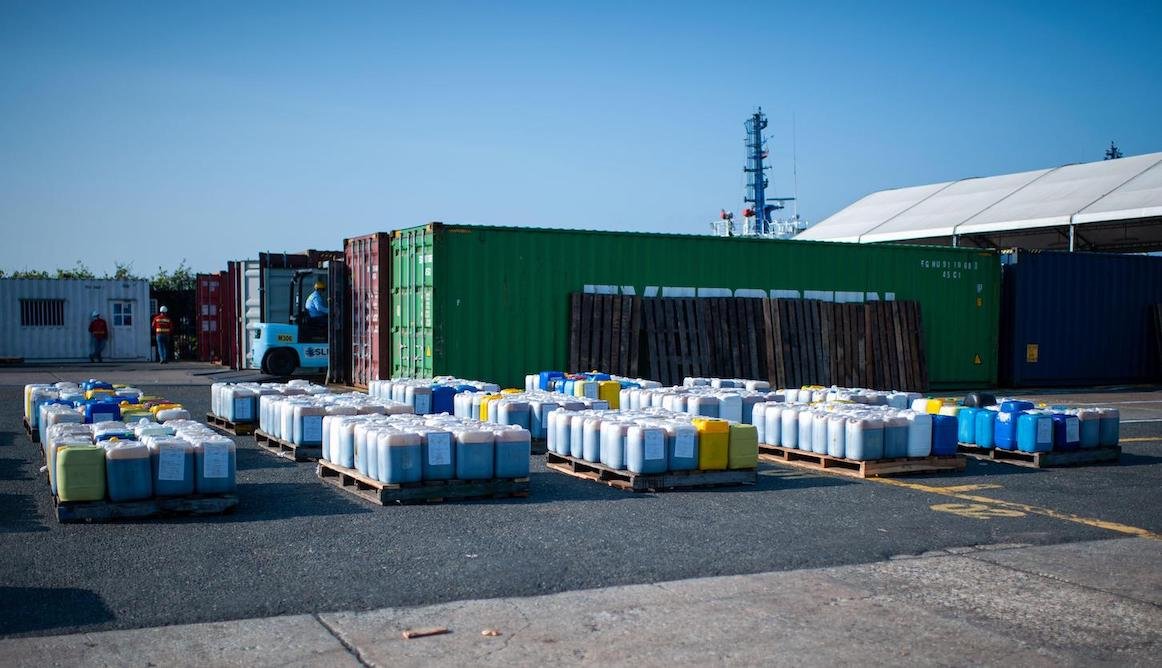The global business of cocaine trafficking
17 April 2023
During the last two years, the amount of cocaine trafficked from Latin America to the rest of the world has reached record levels, bringing to light new routes of interest, criminal actors, and methods of smuggling. Most of the traffic takes place by sea on cargo ships, possibly causing severe repercussions for shipping companies.
By Maria Sole Brigati, Security analyst intern
Cocaine trafficking is a huge global business worth billions of euros yearly. Since the beginning of the Covid-19 pandemic, the amount of cocaine manufactured and trafficked has increased to historical highs. More specifically, estimates show that in 2020, around 1980 tons of cocaine were produced, while in 2021, this amount increased to approximately 2675 tons. Despite a lack of aggregate data for 2022, the amount of cocaine produced appears to have grown even more.
Coca leaves only grow in specific regions of Colombia, Peru and Bolivia under specific atmospheric conditions. After a four-step process, coca leaves are transformed into the final product, cocaine hydrochloride, which is then illegally trafficked all over the world by organised criminal groups. According to the International Chamber of Shipping (ICS), around 90% of cocaine is trafficked by sea, posing a threat to the businesses of logistic companies. Most of the cocaine is destined for the U.S. and Europe, respectively the first and second consumers of this drug globally. Oceania has also become a well-established cocaine consumer.
The main maritime route of trafficking has historically been the Atlantic route, with most seizures leaving Latin America and arriving in Europe via Spanish and Portuguese ports. Today, criminal groups tend to prefer different entry points to import the drug into Europe. On one hand, they smuggle cocaine directly from Latin America to Europe via non-traditional ports, notably Antwerp, Rotterdam, Hamburg, and Le Havre. On the other hand, large amounts of cocaine reportedly transit through Western and Central African countries, such as Cape Verde, Ghana, and the Ivory Coast, before entering Europe from Mediterranean ports in Italy, Greece, Turkey, and Albania.
The Pacific route has lately gained importance in the cocaine trade. Many shipments from the Andean countries were discovered in or on their way to trans-Pacific destinations, particularly Australia. Of lesser maritime importance, the Pacific route is also used to smuggle cocaine into the U.S., often through Central America.
Finally, the Caribbean route plays a highly strategic role in the cocaine traffic. All the Caribbean countries are important transit spots for cocaine coming from the Andean region. According to the latest seizures in 2023, the Dominican Republic and Puerto Rico seem to be two particular hot spots for the trade. Once in the Caribbean, the majority of cocaine leaves for the U.S. and Europe.
Despite drug cartels constantly inventing new ways to smuggle cocaine around the world, their main modus operandi remains hiding the drug in containers on cargo ships transporting legal goods. Even if the shipping companies are frequently unaware of the drug trafficking, the consequences for them are likely to be severe. Indeed, first there might be reputational damage linked to low-quality security regulations or crew corruption. Second, the ship may be detained for extended periods and eventually the contents of the shipment may be damaged. Lastly, crew members may be endangered, threatened, or forced by cartels to transport the drug. With cocaine volumes increasing, these threats are also expected to increase.
LEARN MORE:
There are several Risk Intelligence reports that can help you assess the risk of a specific route, or provide further background for decision-making.
Risk Intelligence’s risk assessment reports feature in-depth analyses of current or forecasted threats for specific client operations - a region or a route - and serve as a foundation for decision-making. Our Security Risk Assessments are complete operational assessments containing a range of analytical components, enabling our clients to optimise their security risk management, reduce security costs and losses, and ensure compliance.

